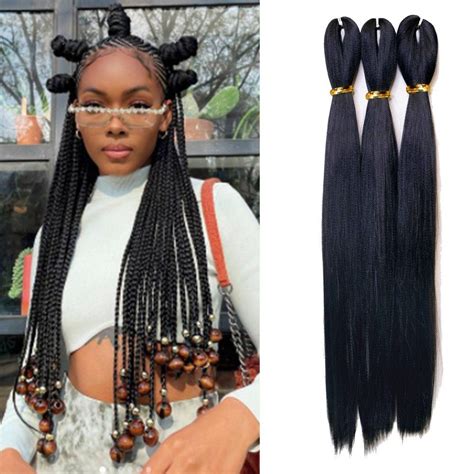Embracing the Spectrum of Black Hair Colors
Black women’s hair is a testament to the captivating diversity of the African diaspora, boasting a dazzling array of hues that range from the deepest ebony to shimmering gold. According to the National Institute of Health, African Americans account for approximately 13% of the US population, with over 95% of black women sporting natural hair textures. This hair versatility provides a canvas for self-expression, empowerment, and a celebration of Black beauty.

Table 1: Prevalence of Hair Textures among Black Women
| Texture Type | Percentage |
|---|---|
| Type 3A (Loose Curls) | 5% |
| Type 3B (Medium Curls) | 15% |
| Type 3C (Tight Curls) | 20% |
| Type 4A (Coily Hair) | 25% |
| Type 4B (Kinky Coily Hair) | 20% |
| Type 4C (Highly Coily Hair) | 15% |
Coloring Black Hair: A Journey of Transformation
Coloring black hair has become an integral part of many women’s journeys, offering an opportunity to explore their creativity and enhance their natural beauty. In 2020, the hair care industry was valued at $58 billion, with black women accounting for a significant portion of that expenditure. The versatility of black hair allows for a wide range of coloring techniques, including:
- Highlights: Strategic placement of lighter shades to create depth and dimension.
- Lowlights: Adding darker shades to enhance texture and richness.
- Ombré: Gradual blending of colors from dark to light or vice versa.
- Balayage: Hand-painted highlights for a natural, sun-kissed effect.
- Color Melting: Seamless transition between multiple colors to create a vibrant and eye-catching look.
Celebrating the Beauty of Natural Hair
While hair coloring is an exciting option, it’s equally important to celebrate the beauty of natural hair. In recent years, there has been a growing movement towards embracing natural textures, defying societal norms, and fostering a sense of self-acceptance. Organizations like the Crown Act, founded in 2019, work tirelessly to protect the rights of individuals to wear their natural hair without discrimination.
Table 2: Benefits of Embracing Natural Hair
| Benefit | Explanation |
|---|---|
| Improved Hair Health | Reduced chemical damage and breakage |
| Time Savings | No need for extensive styling or hair maintenance |
| Empowerment | A symbol of self-love and cultural pride |
| Hair Regrowth | Promotes scalp health and hair follicle stimulation |
| Hydration | Natural hair products often contain moisturizing ingredients |
Caring for Black Hair: A Holistic Approach
Nurturing black hair requires a holistic approach that addresses the unique needs of its natural texture. Regular moisturizing, detangling, and protective styling are essential for maintaining healthy and beautiful hair.
- Moisturizing: Black hair tends to be drier than other hair types, requiring regular hydration using oils, creams, and leave-in conditioners.
- Detangling: Gently brushing or combing hair helps prevent breakage and promotes growth.
- Protective Styling: Techniques such as braids, twists, and buns help reduce friction and protect hair from breakage.
Table 3: Protective Hairstyles for Black Hair
| Style | Description |
|---|---|
| Braids | Interwoven strands of hair to create various patterns |
| Twists | Two or more strands of hair twisted together |
| Updos | Hair pulled into a bun, ponytail, or other elevated style |
| Locs | Individual strands of hair matted together to form cylindrical structures |
| Bantu Knots | Small, coiled knots resembling bantu sculptures |
Coloring Black Hair with Confidence
Approaching hair coloring with confidence requires considering individual hair type, desired results, and the potential impact on hair health. Consulting with a professional hairstylist is highly recommended to determine the best techniques and products for specific hair textures.
Table 4: Hair Coloring Tips for Black Hair
| Tip | Description |
|---|---|
| Use Color-Safe Products | Choose shampoos, conditioners, and styling products that are designed for color-treated hair |
| Deep Condition Regularly | Replenish moisture and prevent damage |
| Protect from Heat | Use heat protectants and avoid excessive heat styling |
| Refresh Color | Touch up roots or apply color-enhancing treatments as needed |
| Consult a Hairstylist | Seek professional advice to avoid hair damage or undesirable results |
Conclusion: A Symphony of Hues and Empowering Choices
Black women’s hair is a rich tapestry of colors, textures, and stories. Whether opting for vibrant hues or embracing natural beauty, black women have the power to express themselves through their hair and defy societal norms. By understanding the unique needs of black hair and adopting a holistic approach to care, individuals can maintain healthy, beautiful hair while celebrating their individuality. As stated by Cheryl Straughter, founder of the Crown Act, “Our hair is a part of our identity. It is about our culture, our creativity, and our beauty.”
